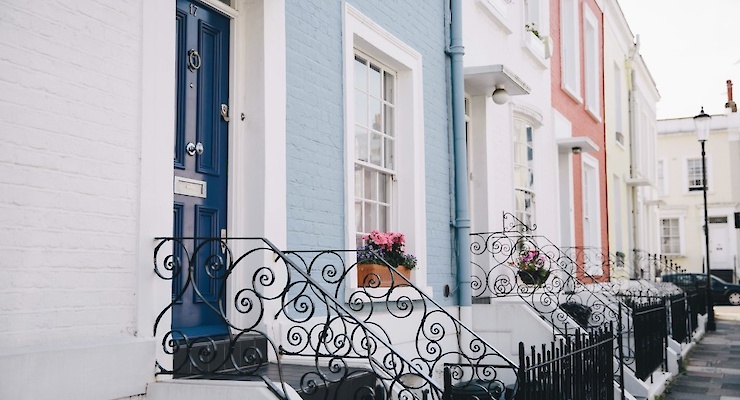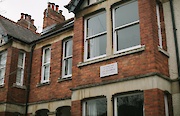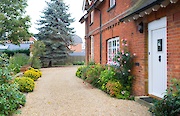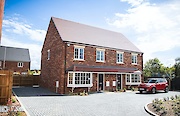


Head of Content

Mortgage Advisor & Director
What is Help to Buy London?

For Londoners looking to buy their first home, Help to Buy London is a great opportunity. Help to Buy London can be used by Londoners who are unable to afford the higher prices of London property due to low incomes or high debts.
Help to Buy London is a scheme that the Government provides to help first-time buyers in London get on the property ladder. Help to Buy London is a Government-backed scheme that helps towards the up-front costs of buying their first home, with an equity loan worth up to 40% of the property value - to a cap of £600,000.
This scheme can be used in conjunction with a conventional mortgage to purchase your first property. The equity loan is interest-free for five years and you only need to pay back what you borrowed when you sell or move home.
The scheme is available on newly-built properties only and it has now been extended to 2023.
Who qualifies for Help to Buy London?
To qualify for Help to Buy London, applicants must not own a property and be buying their first home in the capital. The scheme only available on new-build properties which means that the scheme cannot be used if you are looking to buy an existing house.
You must have a deposit of at least 5% and get a Help to Buy mortgage. You must be using the home as your primary residence, not as a second home or holiday home.
How do I apply for Help to Buy London?
To apply for the scheme, you need to purchase your property and apply for your Help to Buy loan via a registered Help to Buy builder. For your mortgage, you apply for this separately through your preferred lender or mortgage advisor.
How much can I borrow?
Help To Buy equity loans are capped at 40% of the purchase price up to £600,000, which means you could get a maximum of £240,000 under the scheme. In this example, you would contribute a £30,000 deposit and get a mortgage for the remaining £330,000.
How does the Help to Buy London scheme work?

Help to Buy London works by giving you an equity loan, which is worth up to 40% of the property value.
You'll then need to get a Help to Buy mortgage alongside to fund the remainder of the property purchase. The loan is then interest-free for the first five years of ownership, after which you'll pay a monthly administration fee starting at 1.75%. After year 6, the fee increases in line with the Retail Price Index + 1%. This is important to note, that as the loan will not decrease unless you make early repayments, this administration fee could become expensive or even unaffordable.
To make repayments, there are two options. The first option is called 'staircasing,' and involves paying back 10-20% every year until it's repaid in full. This will depend on how much equity/value has been built into the property after 25 years or when you sell - whichever comes first! Alternatively, if an early repayment becomes necessary (e.g., due to financial hardship) then one could also choose to just pay off part at a time rather than waiting for its completion date.
What are the advantages of Help to Buy London?
Help To Buy offers first-time buyers a leg up onto their first property ladder and for those who can't afford to save for a deposit alongside paying London rental prices, this scheme is ideal!
Saving a deposit can be difficult if you're renting privately in London - especially as rental prices continue to rise year on year. Help To Buy offers financial support towards the purchase of a property.
Help To Buy London offers first-time buyers the opportunity to get onto the housing ladder with up to 40% equity loan, and an interest-free period for five years on top - saving money in repayments compared to other mortgages that have initial fees before you start paying down the debt.
Is Help to Buy London still available in 2021?
Yes, the new Help to Buy scheme launched on 1st April 2021 and will close in March 2023. Under the new scheme, you'll need to buy a new build property.

Get your mortgage in principle certificate in 5 minutes
Is Help to Buy London only for new builds?
Yes, the new scheme can be used to buy a new build home only.
Apply for a Help to Buy London mortgage now

At Teito, we've streamlined the mortgage process to remove all of the stressful paperwork so that all you need to do is apply and we'll take care of the rest! Get started now and you could get a mortgage in principle in minutes.
Choosing an Adviser
Selecting a qualified and experienced mortgage adviser is of great importance. To choose a suitable adviser, evaluate their qualifications, experience, and reputation, and ensure they are regulated by the Financial Conduct Authority (FCA).
Read reviews from previous clients and make sure they provide a clear explanation of the products and services they offer, as well as the fees and charges associated with them.
Last updated 27 February 2024



























































